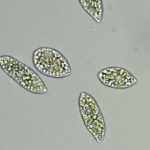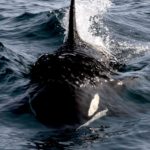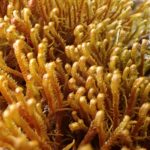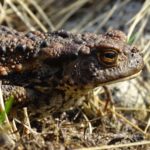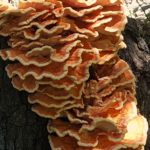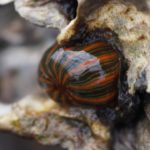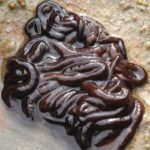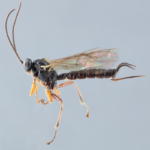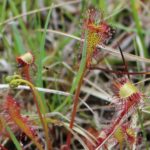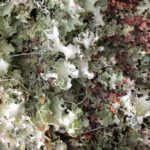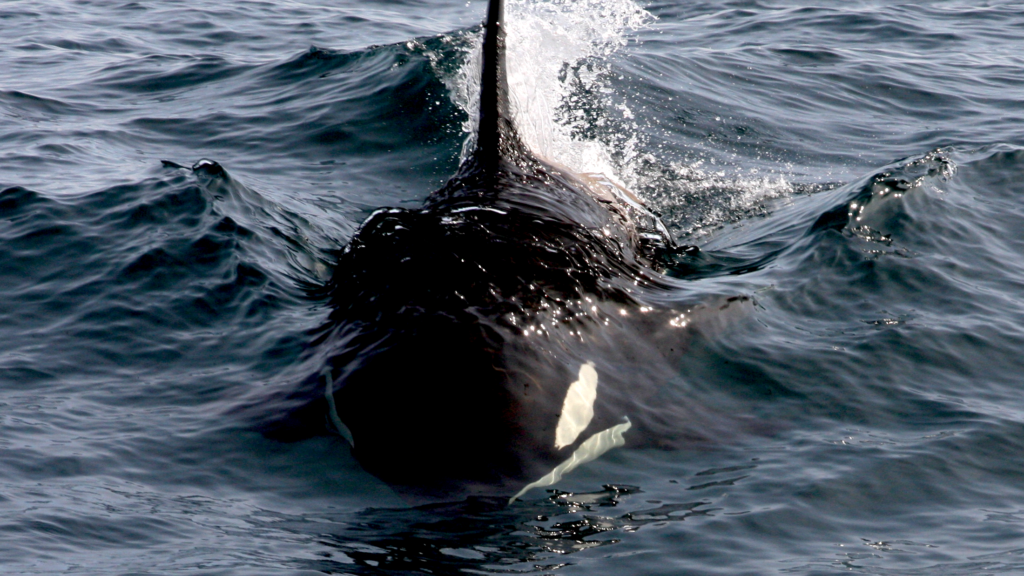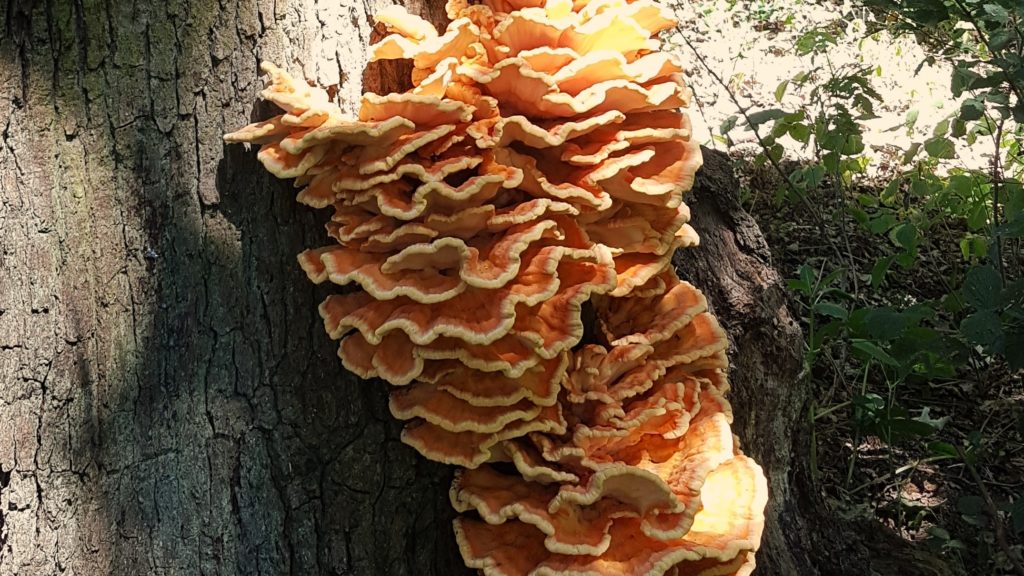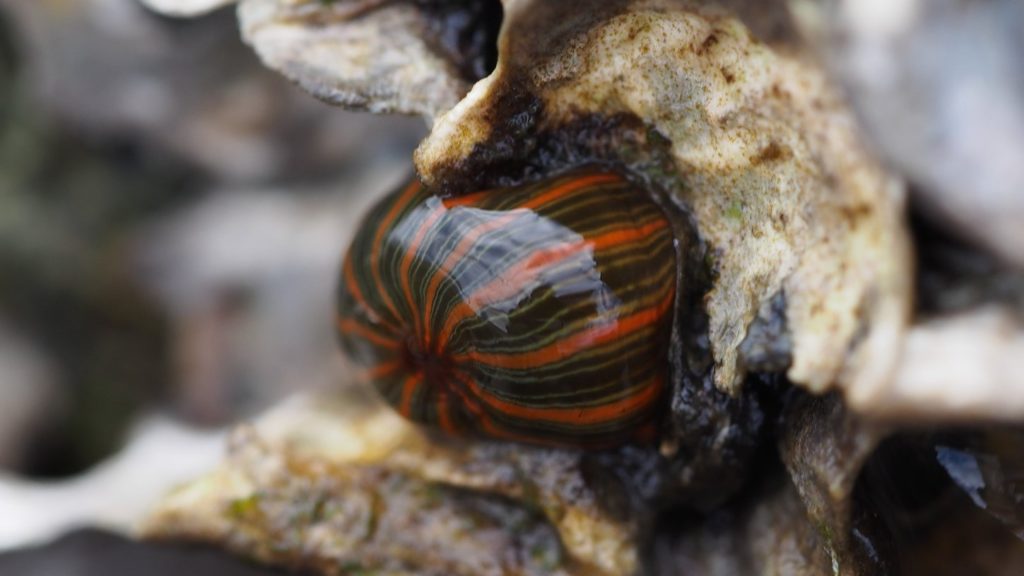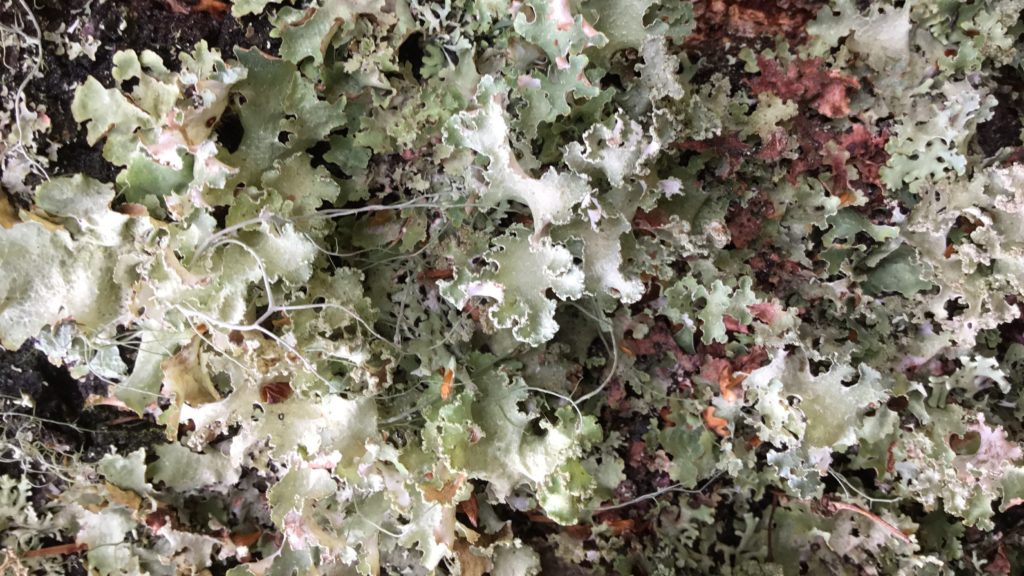Decoding the DNA Tree of Life
If you’ve already encountered the Darwin Tree of Life exhibition stand touring the country, you will have been shown the journey of a biological sample through our project: from being collected in its habitat, to having its DNA sequenced in the lab, to eventually being made available for anyone in the world to study and understand.
Our 12 featured organisms were just some of the 70,000 species that can be found across Britain and Ireland’s varied habitats.
Find out more about each of the species by selecting the image below.
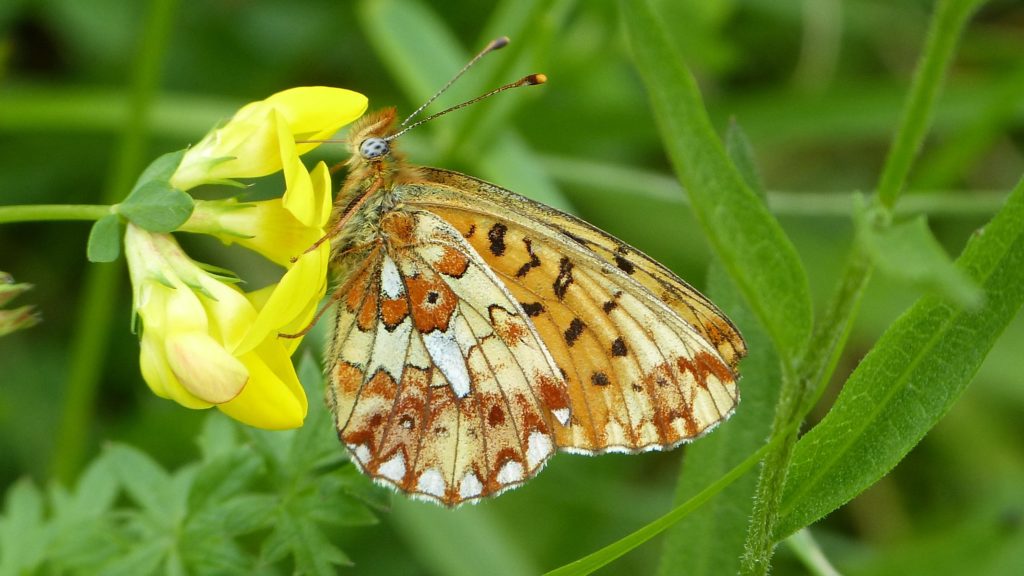
Pearl-bordered Fritillary
Boloria euphrosyne
? Arthropod
? Genome size: 400 Million DNA base pairs. or about 13% of the size of the human genome
? Organism size: 3-5cm
? Found in Deciduous woodland
⏲️ Last shared an ancestor with you around 525 Million years ago
What’s remarkable about it?
The Pearl-bordered Fritillary is one of the most rapidly declining species in the UK. It has disappeared from 90% of the places where it could be found in the 1970s.
What’s great about it?
We are now reintroducing new populations of B. euphrosyne to places where we have restored a suitable habitat. As part of this, areas of the Malvern Hills are no longer being grazed by livestock, so that bracken can grow. This is the butterfly’s preferred habitat, and the bracken also encourages the violets which its caterpillars eat.
Why is its genome important?
The project to reintroduce B. euphrosyne is helping us to test a new way of tracking the success of conservation efforts. We now have the complete genome of a single female who we caught in summer 2021, and we will use that to understand where the new butterflies are travelling, how they are interacting with other species, and how they are responding to wind and weather.
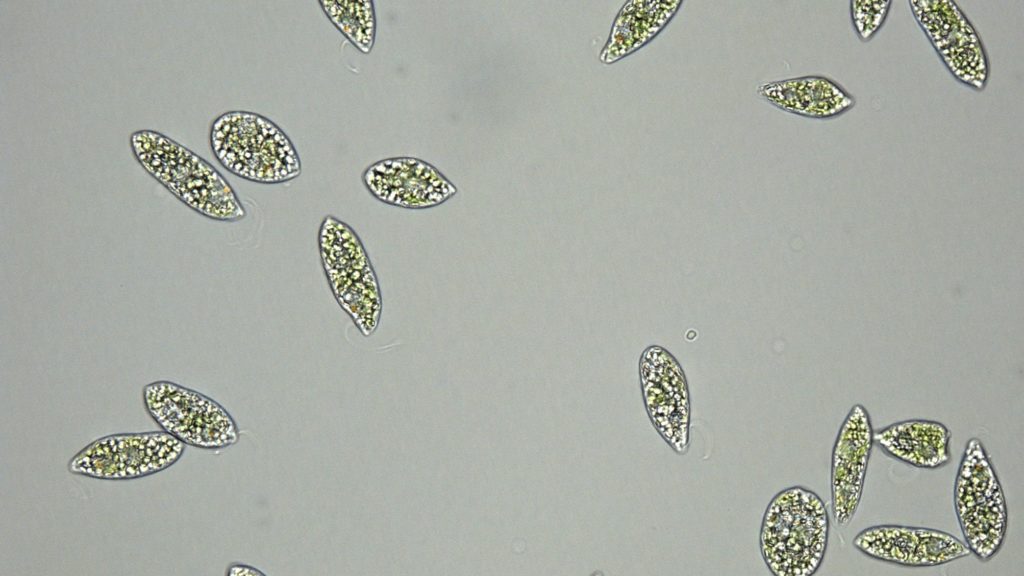
Freshwater alga
Euglena gracilis
? Protist
? Genome size: 2000 Million DNA base pairs, or about 63% of the size of the human genome
? Organism size: 0.001-0.05cm
? Found in inland freshwater
⏲️ Last shared an ancestor with you around 1800 Million years ago
What’s remarkable about it?
E. gracilis is neither a plant nor an animal, but makes its living using strategies from both. Sometimes it eats bacteria in the same way that animals do, but most of the time it seems to prefer using sunlight like a plant.
What’s great about it?
E. gracilis and creatures like it produce around one-third of all the Oxygen in the atmosphere, and in doing so lock away enormous amounts of Carbon Dioxide. But they are also amazing in their own right: they have an “eyespot” which allows them to see where the light is brightest, and they have tails which they use to move towards that light so that they can photosynthesise most efficiently.
Why is its genome important?
By understanding the genome of E. gracilis we hope to be able to harness its ability to lock away carbon dioxide, and at the same time produce new, more efficient biofuels.
Killer whale
Orcinus orca
? Chordate
? Genome size: 3080 Million DNA base pairs, or about 96% of the size of the human genome
? Organism size: 500-800 cm
? Found in coastal shelf
⏲️ Last shared an ancestor with you around 94 Million years ago
What’s remarkable about it?
You wouldn’t think it, but orca (or killer whales) are native to the UK. There are different groups living around the Shetland Islands, around the Scottish fishing grounds, and down the west coast from as far south as Cornwall.
What’s great about it?
O. orca has a complex matriarchal social structure, only matched in complexity by that of elephants, monkeys and apes. They hunt in groups (or “pods”) and have complex dialects made of clicks and whistles. These dialects even vary between families within a population, just like the language of humans.
Why is its genome important?
British killer whale populations can be small and highly inbred, meaning that they can be prone to ill health. One population is on the verge of extinction, now consisting of just two individuals. Understanding the orca genome can help us to identify problems early and help the populations to thrive.

Slime mould
Dictyostelium discoideum
? Protist
? Genome size: 34 Million DNA base pairs, or about 1% of the size of the human genome
? Organism size: 0.001 – 0.002cm
? Found in grasslands and meadows
⏲️ Last shared an ancestor with you around 1500 Million years ago
What’s remarkable about it?
D. discoideum starts its life as a single-celled amoeba that eats bacteria. But once the amoebas in an area have used up all the food they start to act like a single creature. They move together like cars on a road and congregate at a central point where they form into a single multicellular “slug”. This new organism then stands on its end to release spores, and those grow into new amoebas.
What’s great about it?
Since we started studying it about 100 years ago, D discoideum has helped us to understand lots of basic questions about how cells grow, how they communicate with each other, and how they move. And because amoebas are distantly related to humans we can use it to study things like cancer in the lab without experimenting on animals
Why is its genome important?
We know that D discoideum grows, moves and communicates in interesting ways, but understanding its genome will help us understand how it can do those things. This can teach us lots of important lessons about how other organisms can do what they do.
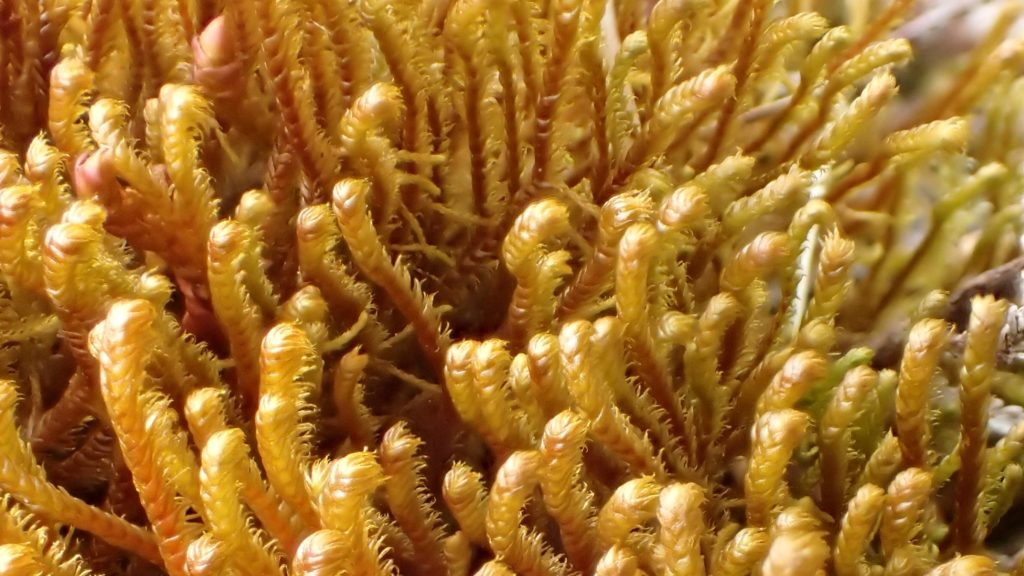
Northern Prongwort
Herbertus borealis
? Plant
? Genome size: 1150 Million DNA base pairs, or about 36% of the size of the human genome
? Organism size: up to 20cm
⛰️ Found in mountainous highland and heathland
⏲️ Last shared an ancestor with you around 1400 Million years ago
What’s remarkable about it?
It’s only 50 years since H. borealis was found to be a distinct species! Back then we thought it came from both Norway and Scotland, but we now think the plants in Norway are a different species entirely. This means that H. borealis only actually lives on two mountains in Scotland.
What’s great about it?
H. borealis doesn’t seem to sexually reproduce. Instead, new plants grow from broken stem and leaf fragments. This allows the plant to grow in abundance at its site in Scotland, but it also stops it from spreading over long distances and reduces its genetic variation.
Why is its genome important?
The genome of H. borealis may help us understand how it can be so abundant in one place but unable to spread more widely. Liverwort species like H. borealis also contain unique chemical compounds which may have important applications for medical research.
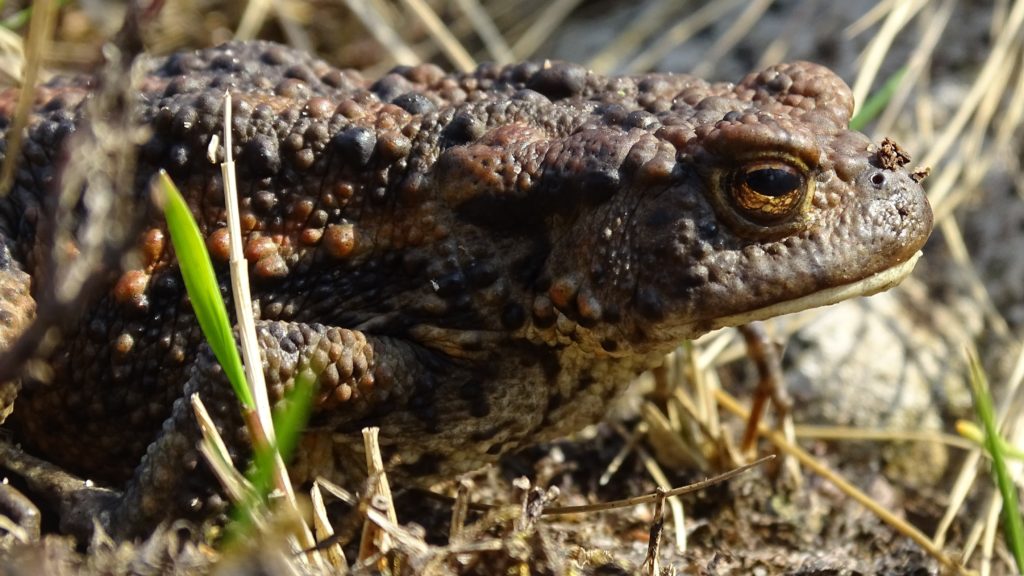
Common toad
Bufo bufo
? Chordate
? Genome size: 5040 Million DNA base pairs, or over one-and-a-half times the size of the human genome.
? Organism size: 8 – 13cm
? Found in woodland
⏲️ Last shared an ancestor with you around 350 Million years ago
What’s remarkable about it?
B. bufo populations have declined drastically over the last few decades, both because of habitat loss, and because of new diseases. As a result, the common toad isn’t all that common any more.
What’s great about it?
Toads are incredible animals. Their skin is permeable, which means that they can breathe through it, but also makes them especially sensitive to pollution in the environment. This means they are a good “indicator species” which can tell us when an environment is under threat.
Why is its genome important?
As well as helping us understand the impact we are having on the environment, B. bufo’s genome might help us to develop new materials and medicines, by understanding the way they produce toxins or mucus.
Chicken of the Woods
Laetiporus sulphureus
? Fungi
? Genome size: 39.9 Million DNA base pairs or about 1% of the size of the human genome
? Organism size: 5-25cm
? Found in deciduous forest
⏲️ Last shared an ancestor with you around 1300 Million years ago
What’s remarkable about it?
We have no idea how many species of Laetiporus fungi there are! We think there may be lots of species which all look very similar.
What’s great about it?
People think L. sulphureus is great because it is distinctive and edible. But other organisms like it too, because it gets its food by attacking the dead wood in the heart of trees like oak. This doesn’t kill the tree, because L. sulphureus isn’t able to attack living wood. But decomposing the heartwood recycles nutrients that the tree locked in its core many years before, which then feed other organisms such as invertebrates. This also creates cavities in the tree that become homes for other animals including mammals and birds.
Why is its genome important?
In humans L. sulphureus is a traditional medicine for cough, but we now think it may give us treatments for other illnesses, including inflammatory diseases, bacterial infection, diabetes, cancers and immune disorders. Understanding its genome will help us unlock this potential, and will teach us how and why Laetiporus species evolved and became different species.
Orange-Striped Anemone
Diadumene lineata
?️ Cnidarian
? Genome size: 394 Million DNA base pairs, or about 13% of the size of the human genome
? Organism size: 1-2 cm
? Found in rocky seashore
⏲️ Last shared an ancestor with you around 550 Million years ago
What’s remarkable about it?
D. lineata is one of the most widely spread animals in the world, and can be found on every continent apart from Antarctica!
What’s great about it?
Its success is down to a number of special abilities. It can split itself into multiple new anemone clones and also produces babies which stick to boat hulls. As it travels it can survive huge changes in temperature, and in the levels of salt and oxygen in the water. This means we can use it to understand how species spread, and how that can be linked to their method of reproduction, environmental variation and genetic changes.
Why is its genome important?
D lineata is a “cnidarian”, along with corals, jellyfish and hydroids. These are one of the oldest forms of multicellular life, and have unusual body layouts and complex life cycles. By understanding their genomes we will be able to uncover the mysteries of the evolution of the nervous system, embryos, and the “bilateral” (two-sided) body.
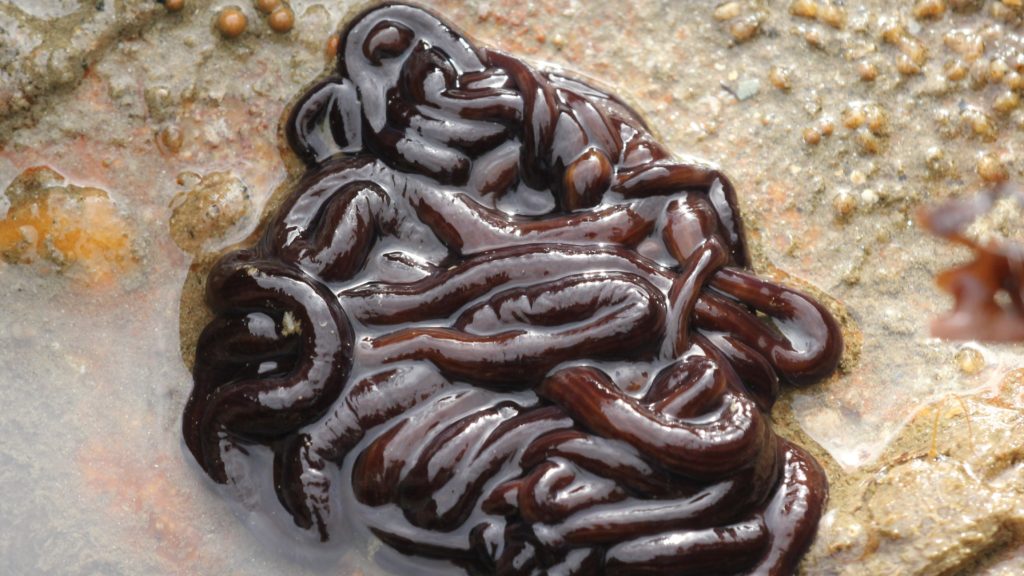
Bootlace worm
Lineus longissimus
? Worm
? Genome size: 351 Million DNA base pairs, or about 11% of the size of the human genome
? Organism size: 1cm wide, 500 – 1500 cm long (and maybe more)
? Found in rocky seashore
⏲️ Last shared an ancestor with you around 525 Million years ago
What’s remarkable about it?
It’s huge! These are the longest animal in the UK, and maybe even the world. The longest one recorded was 55m in St Andrews in 1864, although they may have been stretched it a bit…but even so that makes it longer than the biggest ever Blue Whale or Lion’s Mane Jellyfish, both of which were around 35m.
What’s great about it?
L. longissimus produces a toxic spit, which it uses to protect itself from predators, and to paralyse the crabs that it eats. This slime also seems to work on cockroaches but not on mammals, so it might be a source of new insecticides.
Why is its genome important?
Understanding the genomes of animals like L. longissimus gives us a huge data bank of potential chemicals that we can use for new medical treatments
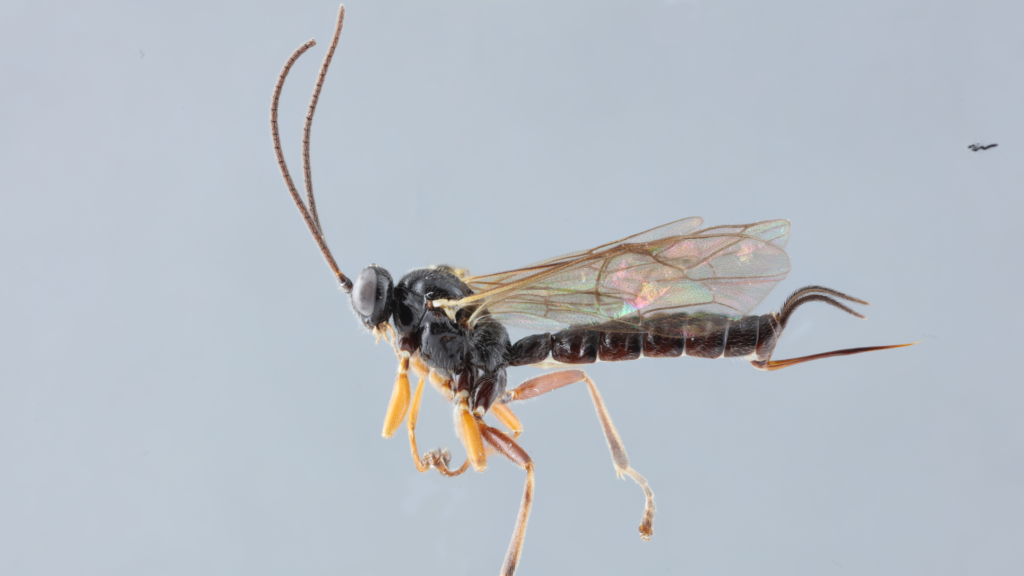
Darwin Wasp
Polysphincta tuberosa
? Arthropod
? Genome size: 264 Million DNA base pairs, or about 8% of the size of the human genome
? Organism size: 0.5-0.9cm
? Found in deciduous forest
⏲️ Last shared an ancestor with you around 525 Million years ago
What’s remarkable about it?
The Darwin wasps (or “Ichneumonidae”) are named after Charles Darwin, because their lifestyle is so gruesome that they shook his belief in God. He wrote:
“I cannot persuade myself that a beneficent and omnipotent God would have designedly created the Ichneumonidæ with the express intention of their feeding within the living bodies of Caterpillars…”
What’s great about it?
P. tuberosa attacks spiders in a really sophisticated way. The adult wasp stings and temporarily paralyses the spider, and then lays an egg on the spider’s abdomen. The wasp larva then gradually eats the spider alive as the spider continues to hunt.
Why is its genome important?
When the wasp larva is ready to kill the spider it makes the spider spin a different sort of web. Understanding the genomes of these wasps should help us understand how they can make the spider change its behaviour in this way, and how their complex venoms work.
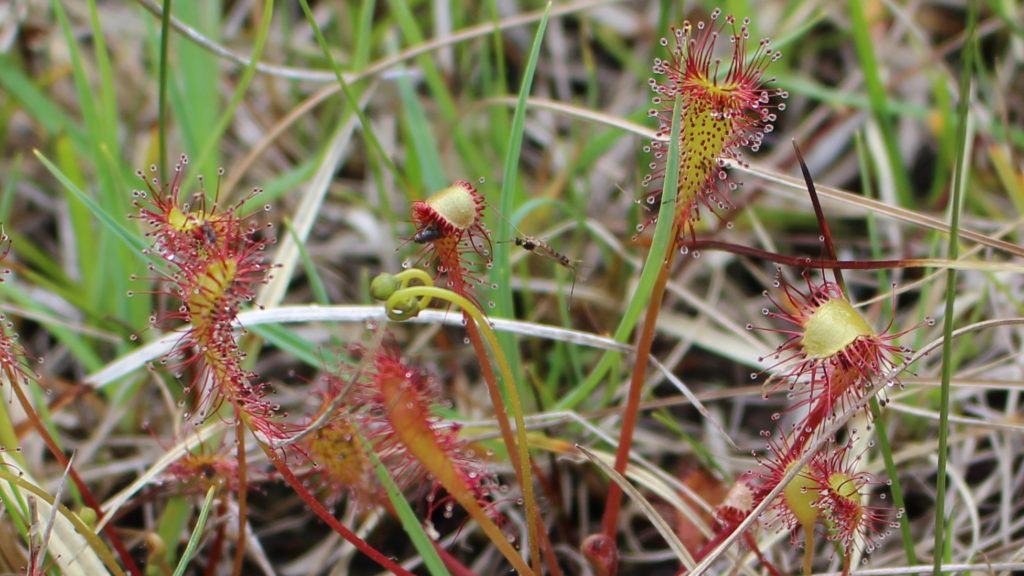
English Sundew
Drosera anglica
? Plant
? Genome size: 2820 Million DNA base pairs, or about 88% of the size of the human genome
? Organism size: 8-25cm
? Found in lowland fen
⏲️ Last shared an ancestor with you around 1400 Million years ago
What’s remarkable about it?
In the fenland soils where English sundew grows, nitrogen is in short supply. So to top up their nutrients they catch and digest nitrogen-rich insects!
What’s great about it?
D. anglica tempts insects with a syrupy-smelling mucus, in which they get stuck. It then wraps the insect up with leafy tentacles and secretes more mucus, which digests the insect’s body, allowing it to absorb the nitrogen that the insect contains.
Why is its genome important?
D. anglica can help us understand how plants have adapted to nitrogen-poor environments, as well as teaching us how it has evolved to be a carnivore!
Frilly Lettuce Lichen
Platismatia glauca
? Lichen
? Genome size: 460 Million DNA base pairs, or around 14% of the size of the human genome
? Organism size: 1-6cm
⛰️ Found in mountainous highland/heathland
⏲️ Last shared an ancestor with you around 1300 Million years ago
What’s remarkable about it?
P. glauca is big, unmissable and leafy! It forms giant messy rosettes, and can cover whole sides of trees in upland birchwoods.
What’s great about it?
Lichen is amazing: a “symbiotic” collaboration between a plant and a fungus. P. glauca is a member of one of the largest and most variable families of fungi that form lichens – the Parmeliaceae – which have been around since at least the time of the dinosaurs. They make lichens which come in a wide variety of shapes and sizes, from dangly beards to inconspicuous crusts. They even include parasitic fungi that have lost the ability to form lichens, which evolved about 25 million years ago.
Why is its genome important?
Understanding P. glauca’s genome will help us to see how the Parmeliaceae fungi’s amazing diversity has come about. It will also help us understand how symbiotic species interact, which is fundamental to the diversity of life on earth.


